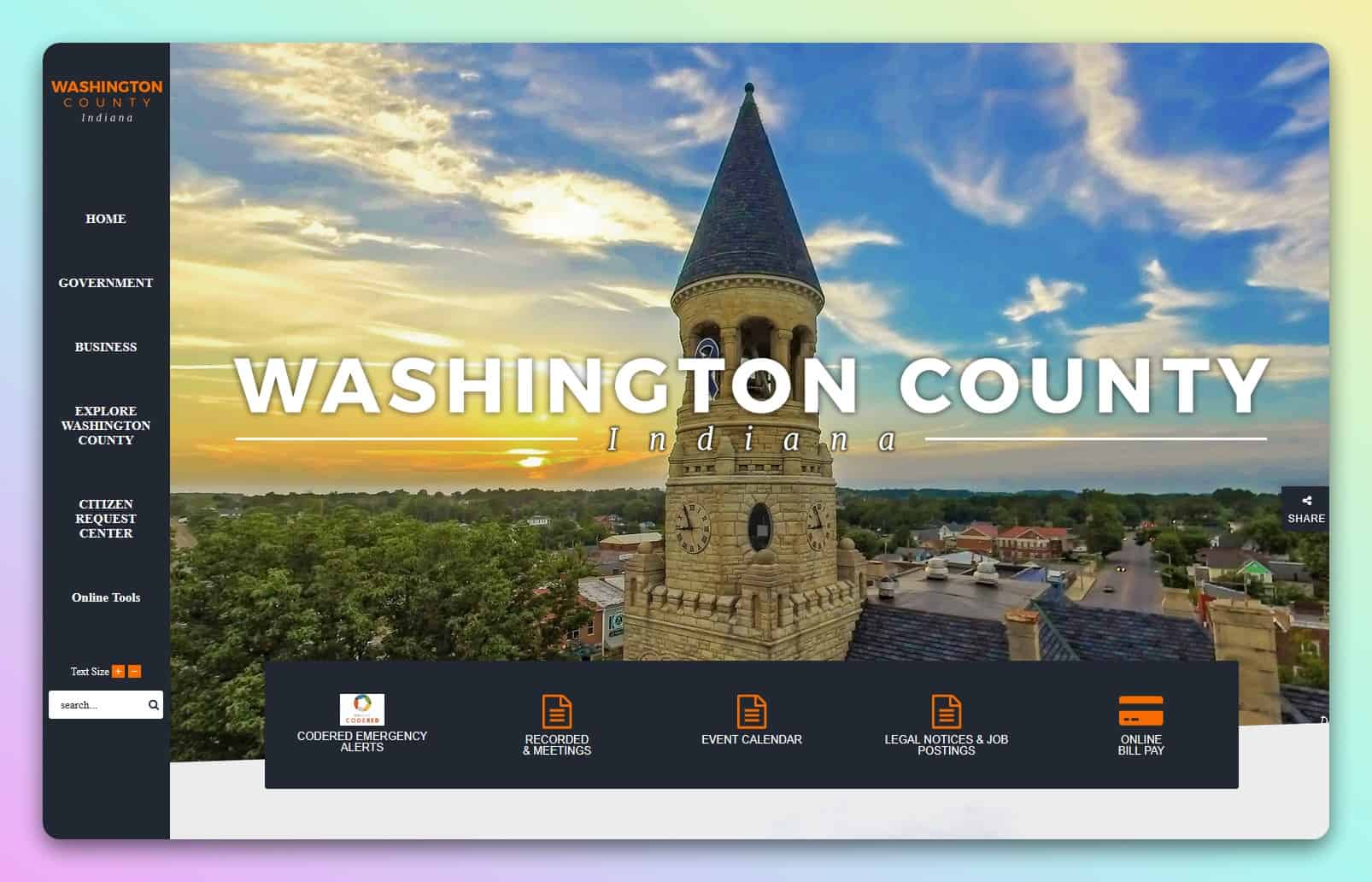Confessions of a web designer
This post is part of an ongoing series. You can see all posts in this series here and follow me on Twitter, and LinkedIn. This post is made available for free. You can also subscribe via email for future posts and become a Supporter.
There are probably close to half a million webpages on the Internet that have some design input from me on them. The design is the exciting part of a new website or site redesign.
Unlike code, which is almost never seen or understood by clients, the design phase lets everyone have an opinion about fonts, colors, image placement, text boxes, and all sorts of visual stuff.
Understanding how the web designer thinks
Every designer comes with their own background, experiences, style, and taste. You can’t teach taste, and you often can’t nudge people’s style very far.
But a great designer can set those characteristics aside and fully immerse themselves in your business, your visitors, and their needs. Young designers and the inexperienced struggle with this.
This is why if you look at a person’s previous work and you notice they have a minimal, masculine, dark, or fluorescent aesthetic across all of their work, you don’t get to be too surprised when your site turns out that way, too. But it’s also entirely possible that person has a few clients all working in the same space.
Every web designer also comes with their own process. For most, they’ll follow this pattern:
- Talk to all stakeholders in some kind of intake meeting
- Review competitors’ websites for ideas or critical things that just need poaching
- Design a wireframe or mockup in some kind of UI tool. This could be Figma, Sketch, Illustrator, Photoshop, etc. It doesn’t really matter what.
- Work on draft mockups until they land on something they like, then share it with the client.
My process worked like this:
- Talk to all stakeholders. Identify and force groups of more than 1 person to identify the sole decision-maker. Someone needs to be in charge.
- Ask a series of intake questions over about 90 minutes that forces everyone to think hard about what they offer, do, and focus on. After about 20 minutes, no one likes this part.
- Begin drafting a big Google or Word doc of every page title, heading, subheading, and body copy. This would take me days or weeks and then I’d hand it off to the client for review.
Most clients would not read the document because it was long. My average was around 20-30 pages for even “small” sites. Reason being you can’t rank a website with 5 pages. Not when one of them is a Contact page and another is an About page that just has a couple of people’s photos on it. - Design the mockup, usually in Photoshop (I’m old school like that), and use the real drafted text in the mockup.
I never used Lorem Ipsum filler text—no one, not one client, ever, in 15 years, ever looked at it and understood what it was. The most common reaction was, “Is this Spanish? Why is this written in Spanish?”
Steve Jobs also allegedly disliked Apple designers using filler text and placeholders in drafts. Probably because real stuff is a lot messier, uglier, and weirder than curated stock photos. - Share the mockup draft with the client, usually via some kind of sharing service like Ziflow so comments can be left directly on the mockup.
Importantly, I always wrote the webpage copy first. Most designers will not do this and are not qualified for it on account they’re designers or developers. If your team or agency doesn’t have someone to write the copy and instead turns to you to do it for them, that’s normal. But you should hire me if you need it. The design team will probably be thankful they don’t have to think about it.
I also skipped the wireframe step. Wireframes are like blueprints to a building—a rough sketch that gives guidance about where the boundaries of various things are.
I like the idea of wireframes because they keep costs under control by getting people to recognize, “Hey, where’s the video go?” Or, “Where do my photos go?” But most clients struggle to recognize these. I’d get a lot of “What is this?” Like I handed someone a monkey’s paw and they weren’t sure what to do or think.
Understanding how the customer thinks
Clients have a different set of needs. Clients want three things:
- Leads or sales coming through the door every day.
- A “simple” site that’s “easy to navigate”.
- This whole problem to go away and to never be involved, despite the reflective need to be heavily involved.
I know this because for years I used to ask, “What are your goals?” And “Is there a style you like?” And the answers were always the same:
- “I want to sell more stuff.”
- “I want something that’s clean and modern and easy to navigate.” Most would follow up with some kind of, “You know, I go to websites sometimes and they’re just so hard to find what you’re after.”
You can see where there’s a mis-match in the goals of these two camps. Designers want it to look nice and function well and if they’re worth their salt they also care about accessibility, page speed, load times, and a slew of other technical stuff clients don’t care to understand. And designers have to be able to hold the line on costs.
But clients do have to understand some things because there are reasons why some things just don’t work. Not every heading on a page gets to be an H1. You absolutely should have some kind of naked email address on every page because not everyone will want to call you.
Some people have vision impairment. Designers need to be prepared to educate clients on this. And if clients insist otherwise, either be comfortable knowing you gave them solid advice and they ignored it, or dump them. Lots of professions have this problem. How many doctors tell their patents to eat better, but that never happens?
This is why when someone says “I go to some sites and I can’t find what I’m looking for”, everyone needs to open up. It’s possible the site could be poorly architected. But 90% of the time this is a client having absurd expectations.
If I went to a store looking for a new hanging pot for a plant and I couldn’t find one that I liked, I wouldn’t say, “Well, this site is hard. None of this works. What a terrible site!” It could be that I’m looking in the wrong spot, or that there is no such product that exists, or my expectations are absurdly high.
A shocking number of people want everything on a site to be “1 click away”. This can’t happen for any site with more than about 20 pages. Simply because some stuff just isn’t that important. Like if I bolded a document because everything is important. No, it isn’t. If everything is important or a priority or urgent, nothing is.
How to tell my web designer I don’t like their design
This is okay. But it’s critical both sides understand how they ended up where it is.
3 rules to evaluating a website design or mockup
- Does this match my brand as it is today or how I explained it to the team?
- Does it perform better or leapfrog my competitors in one ore more useful ways?
- Does it include all the major parts that are necessary for the success of my user flow? (e.g., each page has a “buy” button, phone number, email, etc. in a consistent and predictable place.)
If the answer to any of those is “no”, you’ve got some room to improve. If the answers are “yes”, then you need to think deeply about why you don’t like it.
What to say vs. what not to say to your designer during revisions
Most designers will give you 1 or 2 revisions as part of the contract. Help them help you. Here are some common, vague comments that aren’t helpful:
- “I don’t like this.”
- “My so-and-so doesn’t like this.”
- “We don’t do any of this stuff.”
- “None of this is right.”
- “We’d like to change a bunch of this.”
Instead, get real specific and think deeply about why:
- “We have a hard time reading the text. Specifically, the ‘g’ at the end of some words looks more like an ’s’, which is a problem for some of our product names.”
I often had people tell me they didn’t like a font, but they’d say it about something as mundane as Helvetica or Open Sans or Arial. That’s when I know you’re just making crap up.
If you’re going to take issue with readability, your designer is going to think you’re an illiterate or blind idiot for not being able to read some of the most-used fonts on the planet. Instead, it might not be the font. It might be the spacing, line-height, size, or individual letter glyphs. - “Our board president is worried this might overlap too much with a competitor. He just stumbled across this the other day. What can we do to differentiate this vs. us?”
This is why my personal preference was to never look at competitors or sites in the same industry. Sometimes things just get stuck in your head. - “I know I told you when we started we offered this service. But things have changed because a team member left. We probably need to reduce or remove this section on the homepage and menu as a result.”
Business changes. Everyone gets that. But if your designer hands you a mockup or a copywriter give you a document and it says you sell red and blue t-shirts multiple times and you don’t bother to correct them when you know you don’t sell blue shirts anymore, you’re wasting their time and blowing budgets. They have every right to ask you for more money. In most cases, this is caused by people not taking the drafts or mockups seriously. - “New regulations mean we have to change some of this stuff next year. We think we might as well get ahead of it now. Our lawyer tells us we need to add a few statements to these pages to be in compliance.”
Avoid vague “we’ll have to change this stuff” statements, because your designer won’t know if it’s a big deal or a little deal, and it’ll cascade into big problems during development. Be specific!
I’d sometimes lead clients down a focused and narrow path so I didn’t leave them open-ended. Ask someone, “What do you think?” and they’ll almost always come up with something, even if it’s fine as-is. Ask someone, “What do you think of this font vs. this font?” and you’ve put them onto a manageable path with a clear focus.
And most of all: no one should sit on mockups for days, weeks, or months. Twice in my career a relatively small website took over a year to produce because months would go by without a client looking at something, getting answers to specific questions, or I’d be so numb to a litany of vague requests it became a financial and emotional drain. Designers would do well to add clauses to contracts or SOWs with timelines for review turnaround.


